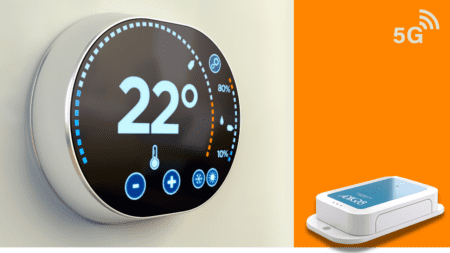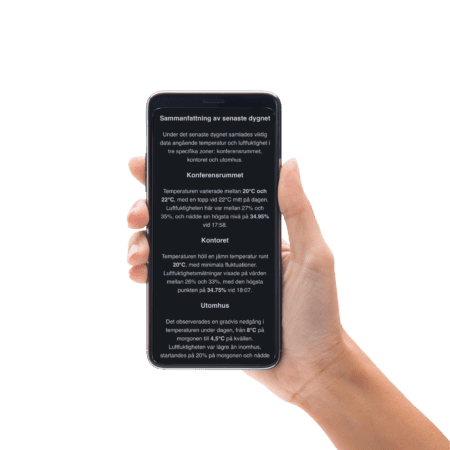 The Internet of Things (IoT) is a set of disruptive technologies for digitalisation. IoT consists of billions of physical devices, named things, worldwide that collect and share data via the Internet. IoT’s core is the physical objects – the “things” that consist of hardware with, for example, embedded sensors and software. Once connected to the Internet, these things share and exchange data with other devices and systems. These things are everyday things found in households, businesses, factories, farms and cities. These devices are the “smart things” found in refrigerators, lights, sensors, door locks and washing machines.
The Internet of Things (IoT) is a set of disruptive technologies for digitalisation. IoT consists of billions of physical devices, named things, worldwide that collect and share data via the Internet. IoT’s core is the physical objects – the “things” that consist of hardware with, for example, embedded sensors and software. Once connected to the Internet, these things share and exchange data with other devices and systems. These things are everyday things found in households, businesses, factories, farms and cities. These devices are the “smart things” found in refrigerators, lights, sensors, door locks and washing machines.
Redefining Digital Transformation with IoT and AI
In digital transformation, IoT stands as a critical driver, pushing beyond the confines of a mere buzzword to actualise real business value. IoT data provides valuable insights. The devices send data to a database that gathers data and makes it graphically visible to the user. However, data and diagrams are only sometimes the easiest to understand. How can we make data more understandable and actionable? What about combining the super-power of the Internet of Things with another super-power: AI?
The crossroads of super-powers
The emergence of AI and IoT marks a defining moment in technological evolution. As we navigate through 2023, the synergy between AI’s data analysis capabilities and IoT’s expansive sensor networks transforms how we interact with and interpret data. This convergence is not just a progression but a paradigm shift, setting new data utilisation benchmarks for business innovation and individual empowerment. We wanted to discover more and combine AI and IoT, where IoT generates data, and AI analyses it.
Addressing Energy Efficiency in Buildings: A Core Objective
With the building industry accounting for a significant share of global energy consumption and greenhouse gas emissions, there’s an urgent call for efficient solutions. The EU’s target of a 55% reduction in emissions by 2030 underscores this necessity. This sector was the perfect playground for a test. Integrating IoT in the building sector, especially with AI’s analytical prowess, revolutionises energy management. This synergy is pivotal in driving insightful data-led behaviour changes and operational optimisations.
IoT and AI offer a dynamic approach, surpassing traditional energy-saving methods by providing a more nuanced, data-driven strategy for energy optimisation.
AI: The Driving Force in Enhancing Building Operations
AI’s integration elevates the functionality of IoT in building management, enabling predictive and adaptive control of systems like HVAC. This advanced interplay boosts energy efficiency and ensures compliance with regulatory standards for temperature and air quality, which are crucial for occupant health and comfort.
IoT’s role in gathering real-time data about indoor environments, paired with AI’s ability to analyse this information intelligently, is transforming the approach to building management. This combination benefits new constructions and existing infrastructures through retrofit IoT solutions, rejuvenating older buildings with modern efficiency standards.

Practical Implementation
Our Stockholm office exemplifies the practical benefits of IoT in building management. Post upgrades in heating and ventilation systems and incorporating IoT solutions provided real-time insights into indoor conditions, leading to enhanced indoor climate control, streamlined maintenance, and improved operational efficiency. All the measurements are presented in fancy diagrams, but what if we could analyse data to make it more understandable and even develop recommendations?
In collaboration with edge2cloud, we brought together these monumental technological breakthroughs. IoT sensors meticulously gather data, forming a digital representation of the physical world. AI then takes the reins, interpreting and presenting this data efficiently and understandably. The result? A web interface that not only displays familiar data and charts but also leverages AI to summarise data and automatically provide recommendations for improvements and adjustments.
A Leap Towards Predictive Analysis
By combining machine learning with continuous data analysis from six simple measurement points—two indoor temperatures, three humidity measurement points, and an outdoor temperature sensor—we and our partners have created a platform. This platform not only analyses current conditions but also anticipates future needs, offering suggestions for action. Imagine a system that not only alerts you to low humidity in the office but also proposes the optimal time to activate a humidifier without lifting a finger. Furthermore, it can predict when humidity will be low next and provide understandable recommendations, far more accessible to comprehend than merely reading a chart.
Comprehensible Data
 By optimising energy use and streamlining space management, we not only cut costs but also minimise our carbon footprint. This test goes beyond our indoor climate; beyond comfort and efficiency, there’s a more profound meaning—sustainability. The test exemplifies how AI can analyse IoT data, making it comprehensible and yielding tangible results.
By optimising energy use and streamlining space management, we not only cut costs but also minimise our carbon footprint. This test goes beyond our indoor climate; beyond comfort and efficiency, there’s a more profound meaning—sustainability. The test exemplifies how AI can analyse IoT data, making it comprehensible and yielding tangible results.
When AI analyses IoT data, it is much easier to understand:
For example:
· Temperature: Oscillating between 20°C and 22°C, with an average around 21°C
· Humidity: Fluctuating between 37% and 45%, averaging slightly above 40%
It is much easier to understand than two diagrams. AI can also present insights like this:
· Indoor temperatures slightly rise during daylight, potentially influenced by sunlight or building use.
· Outdoor temperatures significantly decrease at night, aligning with expectations.
· Indoor humidity maintains relative consistency between day and night.
“Consider these findings when fine-tuning heating and air conditioning settings for enhanced comfort and energy efficiency. Vigilant monitoring of office battery levels at night is advised to prevent operational disruptions.”
Overcoming Challenges in Building Industry with AI and IoT
Traditionally resistant to change, the building industry faces unique challenges in adopting IoT and AI. Yet, the rewards are substantial, with significant energy savings and improved work environments. The key lies in implementing actionable, intelligent measures that provide immediate benefits and insights.
Envisioning an Intelligent Future with AI and IoT
As AI and IoT converge, they promise a future where technology transcends its tool-like existence to become an integral, intelligent partner in enhancing business operations and everyday life. This convergence heralds a new era of efficiency and sustainability, fundamentally reshaping building energy management and contributing to a more sustainable future.
Beyond Building Management: Expanding Horizons
The potential of AI and IoT extends well beyond building management. Their combined capabilities are poised to revolutionise various industries, setting new operational optimisation and innovation standards.
Conclusion: Aligning with Agenda 2030 Through AI and IoT
The collaborative force of AI and IoT is instrumental in achieving the United Nations’ Agenda 2030 goals. These technologies align closely with global sustainability objectives by optimising energy usage, promoting renewable energy sources, and enabling efficient urban planning, showcasing their potential to drive substantial positive change.
This article was first published in the EUTECH magazine Visions for Europe issue 4·2023

